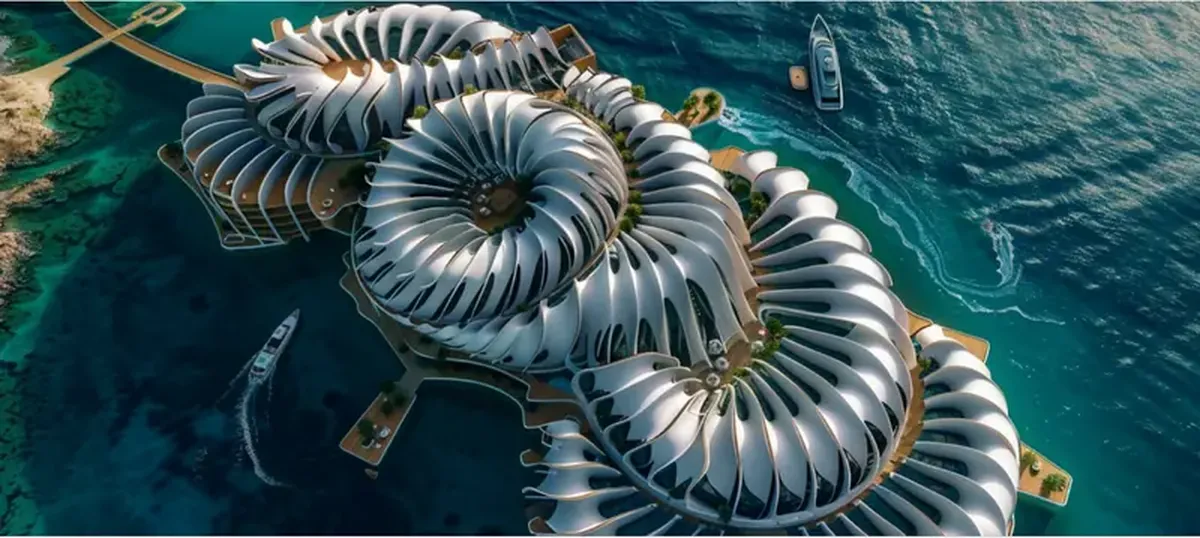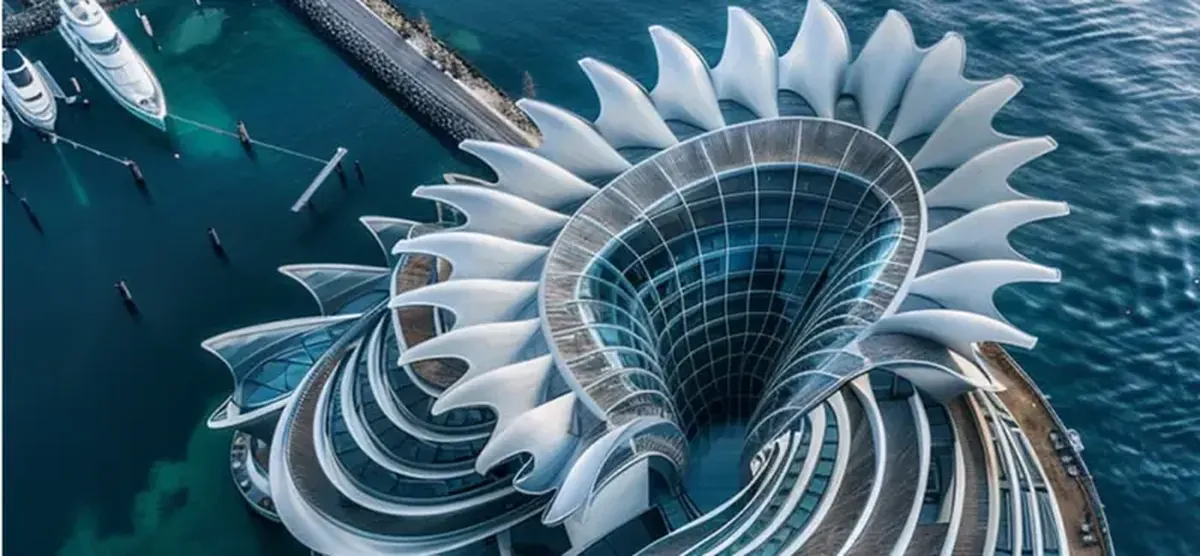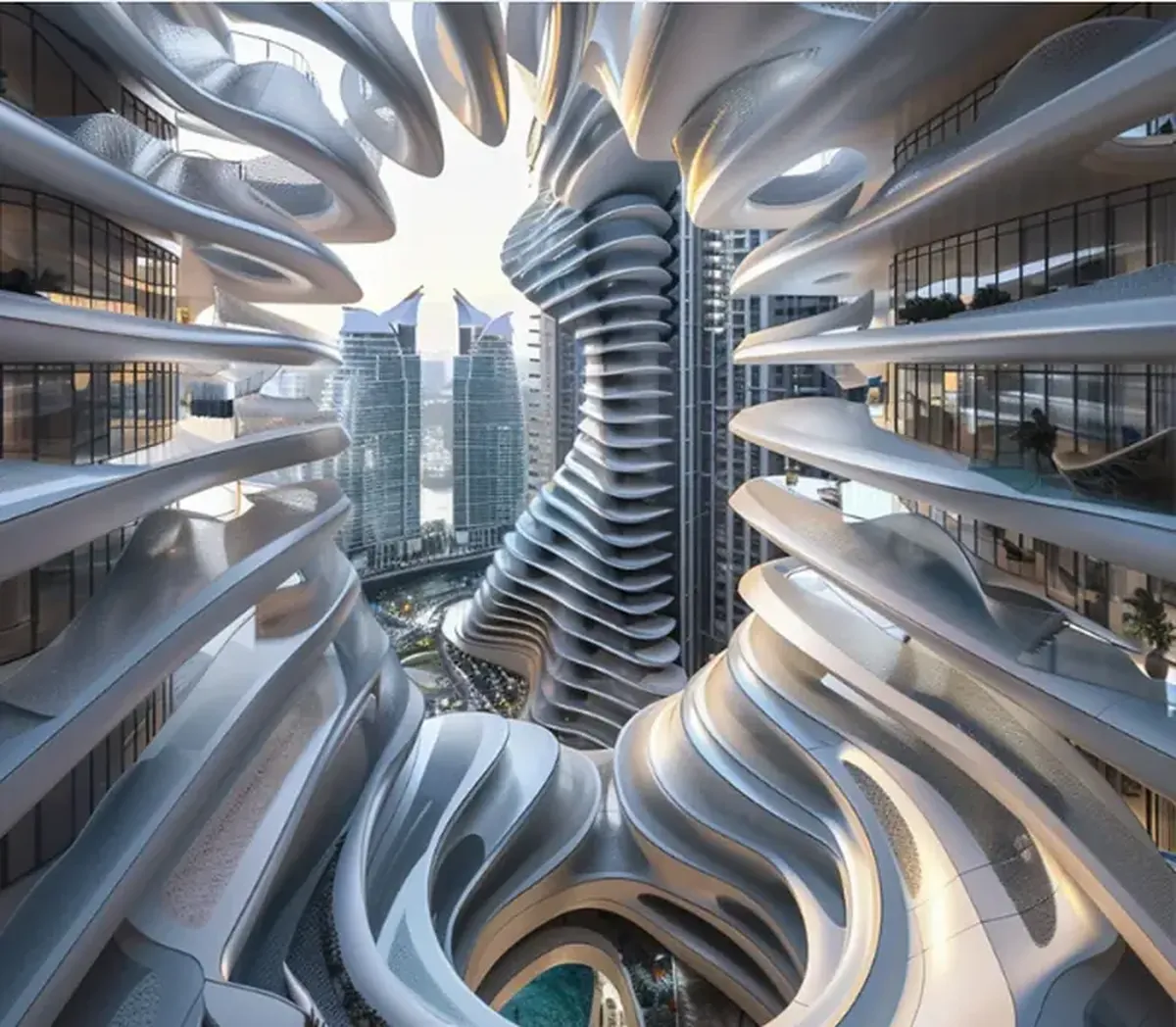
This kind of urban landscape can currently only be seen in dreams. However, its creator—architect and designer Manas Bhatia from New Delhi—truly believes that his surreal skyscrapers will one day see the light of day.

His latest urban series, Nautilus Bioarchitecture, was visualized using artificial intelligence tools like Midjourney, LookX, and ChatGPT. Drawing on the timeless beauty of the golden ratio, Manas Bhatia envisioned skyscrapers resembling nautilus shells. The pearlescent spiral walls of these utopian homes unfold like the shells of marine mollusks or intricate flowers. Futuristic structures rise amidst lush gardens and green terraces. Some shell-like houses emerge directly from the water, where coral reefs can be glimpsed below. Manas Bhatia’s ideal bioarchitecture is a green oasis in the midst of the vast ocean.

What’s the connection between the nautilus and the golden ratio?
The cephalopod nautilus (Nautilus) has been regarded in ancient Hindu mythology as a symbol of beauty in nature. Its shell is one of the most recognized natural objects symbolizing the golden ratio. This proportion is known as the number phi: 1.618… Its digits continue infinitely after the decimal point without repeating. The golden ratio appears in all organic structures. Embedded in the fabric of our Universe, it has long served as a guiding principle in art and architecture. Examples of the golden ratio abound in architectural masterpieces of sublime beauty and perfect proportions, from the Parthenon in Athens to the Pyramids of Giza.

And what about the ancient number phi and artificial intelligence?
The intricate patterns of Nautilus Bioarchitecture, which were also inspired by the golden ratio, evoke a sense of harmony and proportion that transcends mere functionality.

Manas Bhatia has turned to the ancient principle of combining mathematics and aesthetics to create the architecture of tomorrow, fostering a more organic and sustainable environment. After all, the era of global warming demands buildings that are not only visually appealing but also adapted to new climatic conditions.

With the advent of computational design tools and artificial intelligence, architects now find it easier to tackle such challenges. These tools undoubtedly facilitate the integration of mathematical relationships into architectural projects, as reported by Designboom. They also offer architects a significant degree of freedom and flexibility to experiment with various design approaches. Thanks to the AI revolution, Manas Bhatia is exploring the complex geometry of modern urbanism with unprecedented precision, efficiency, and creativity.
